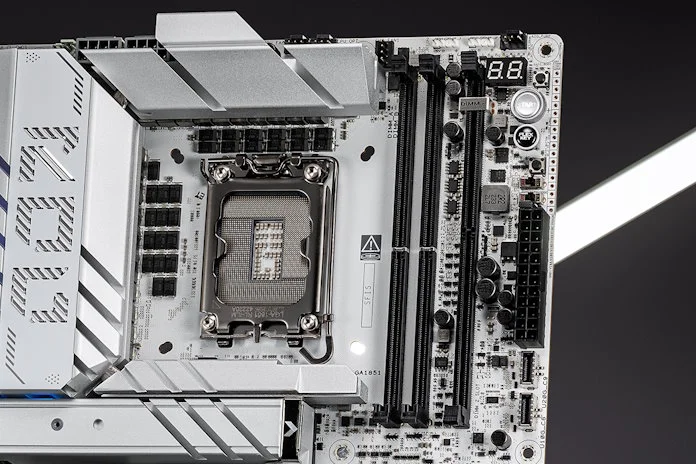Exciting things are happening in the world of desktop PC memory. New Clock Unbuffered DIMM (CUDIMM) kits are popping up on the shelves of etailers, and they boast speeds up to DDR5-9600. Our own work in the labs is showing that even higher speeds are possible with some tweaking and tuning.
These advancements are catching the attention of PC enthusiasts everywhere. Whether you’re a gamer looking to elevate the performance of your cutting-edge PC even higher, or a creative professional who routinely dials up memory-sensitive workloads, you need a motherboard that’s prepped and ready for the new cutting-edge DDR5 memory kits.
That’s what you’ll get with the latest ASUS Z890 motherboards. From innovative hardware designs to easy-to-use optimization features, these boards equip you to push a high-end DDR5 kit to the limits.
The record-breaking ROG Maximus Z890 Apex shows what’s possible
The extreme levels of performance made possible by the latest memory kits aren’t just theoretical. The world’s best overclockers have already shattered the extreme boundaries of performance with these modules, and the results are nothing short of incredible.
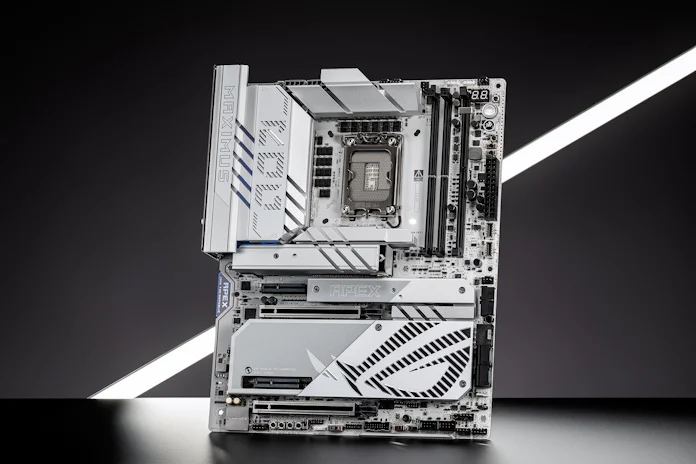
The innovative design of the ROG Maximus Z890 Apex makes it an ideal motherboard for overclockers chasing world records. Its beefy 22+1+2+2 power solution and tightly optimized 2-slot memory layout gives it a leg up over the competition. In fact, this board has already garnered four world records, thirteen global first place records, and 32 first place records. Click here to learn more about these overclocking achievements.
NitroPath DRAM Technology accelerates your ambitions
The ROG Maximus Z890 Apex isn’t the only motherboard in our Z890 lineup that’s equipped for supreme DDR5 performance. This series also includes some of our first motherboards to wield NitroPath DRAM Technology. This transformational redesign of the traditional DRAM slot improves signal quality, increasing DRAM overclocking performance by up to 400 MT/s depending on factors like memory speed, module, and system configuration.
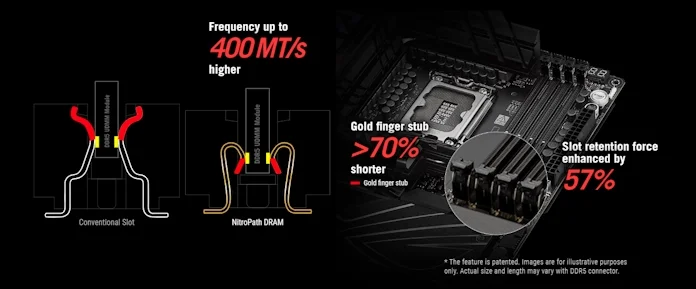
NitroPath DRAM Technology achieves this performance boost with a new approach to the pin layout. This pins in conventional DIMM slots have a “stub” that extends up and away from the DIMM. These stubs cause signal reflection increasingly becomes a barrier to stable operation as you dial in higher memory speeds. NitroPath DRAM Technology reduces the length of these stubs by folding the pins inward for smoother signal transmission with less noise and reflection.
The new design translates to an overall improved experience with high-end memory kits. In our testing, we’ve found that this new slot design can increase DRAM overclocking performance by up to 400MT/s, depending on a variety of factors. NitroPath DRAM Technology is available on the ROG Maximus Z890 Extreme, ROG Maximus Z890 Hero, and ROG Strix Z890-E Gaming WiFi motherboards.
DIMM Flex maximizes memory performance and stability
When you start pushing DDR5 memory to its limits, you’ll end up reckoning with a familiar foe: heat. Like your CPU and and GPU, DDR5 memory modules produce heat when they’re under load, especially when they’re overclocked. And as with those other components, you might not get the full performance from your DDR5 RAM sticks if you don’t deal with that heat effectively.
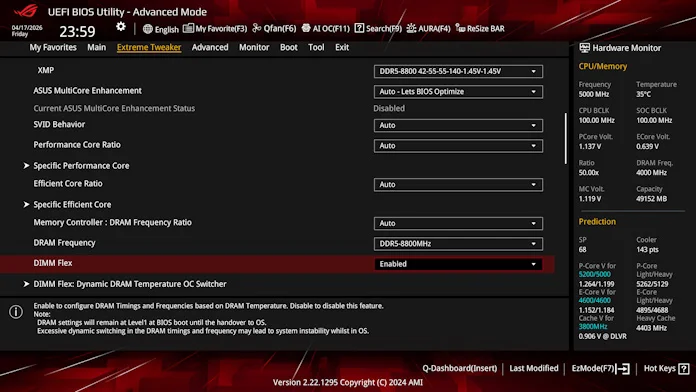
To help you get the most out of your high-end memory kit, we offer DIMM Flex on select Z890 motherboards. DIMM Flex uses a thermal sensor integrated close to the memory slots to feed real-time temperature data to an ASUS embedded controller, which in turn sends dynamic and continuous frequency adjustments to the CPU.
Our testing shows that DIMM Flex can have a striking effect on gaming performance. Using a test rig equipped with the ROG Maximus Z890 Extreme, an Intel Core Ultra (Series 2) CPU, and a blazing-fast DDR5-8800 kit, we found that DIMM Flex boosted frame rates by up to 9.15% over default settings, compared to an 4.27% boost when using the XMP profile.
Enjoy wide compatibility with AEMP III
Perhaps you’re intrigued by the performance potential offered by the latest CUDIMM memory kits, but you’re concerned about what the process of optimizing these new kits will look like. ASUS Z890 motherboards make sure the process is easy with ASUS Enhanced Memory Profile III (AEMP III).
This advanced firmware feature empowers you to achieve unparalleled memory performance with cutting-edge CUDIMM memory. Through a two-phase comprehensive tuning process, AEMP III first optimizes the clock driver and then the memory frequency. This results in the best balance between performance and stability, even at cutting-edge speeds of DDR5-8000 or higher.**
A word about memory gears
If you’re tuning your Z890 system for ideal memory performance, it’s worth your time to pay attention to memory gear modes. If you haven’t worked with memory gears before, here’s a brief primer. In the past, a processor’s memory controller would operate at a frequency equal to memory speed. We call this 1:1 ratio “Gear 1.” But as DDR4 modules were developed with increasingly higher frequencies, a new approach was needed to enable the higher memory module data rates. Accordingly, Gear 2 was introduced, a mode in which the processor memory controller operates at half the memory speed. This approach enhances compatibility and provides greater potential for pushing data rates to higher levels.
Today’s DDR5 memory kits are so fast that Gear 1 is no longer an option. With the latest Intel Core Ultra (Series 2) processors, you have the choice between Gear 2 and Gear 4. Gear 4 operates the CPU memory controller at a quarter of the memory clock speed, and it’s the default setting for most Z890 motherboards due to its excellent compatibility.
However, Gear 4 comes with a tradeoff in the form of higher memory latency. In this regard, Gear 2 is demonstrably better, and that’s especially true in the 6400-8000MHz frequency range. For example, we observed 18.8% lower latency with the Intel Core Ultra 9 285K and DDR5-8000 when we switched from Gear 4 to Gear 2, as measured with AIDA64.
Switching to Gear 2 instead of Gear 4 can even allow a memory kit to punch above its weight class. At DDR5-9000 with Gear 2, an extremely fast CUDIMM kit with the Intel Core Ultra 9 processor 285K recorded faster memory read speeds and 12.48% lower latency than when we configured it for DDR5-9600 and Gear 4.
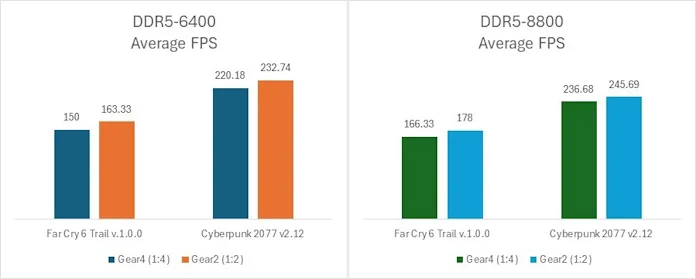
The latency difference between Gear 2 and Gear 4 isn’t just visible in synthetic benchmarks — you’ll notice it in games, too. We compared the performance of two memory kits in Gear 2 and Gear 4 in Far Cry 6 and Cyberpunk 2077 at Full HD, and saw up to 8.8% higher FPS at Gear 2.
Accordingly, we’ve selected Gear 2 as the default setting for ASUS Z890 motherboards. This means that you won’t have to fuss with your memory settings to enjoy the advantages of Gear 2.
Get extreme memory performance with ASUS Z890 motherboards
The ASUS Z890 motherboard lineup gives you high-performance options ready to take your cutting-edge DDR5 kit to the next level. Models equipped with NitroPath DRAM Technology and DIMM Flex stand ready for the fastest memory modules on the market, and across-the-series support for AEMP III memory profiles ensure that you’ll have an easy experience optimizing your memory kit.
Advanced support for the latest DDR5 memory is just one reason to prefer ASUS Z890 motherboards over the competition. To learn about everything that you’ll get with our Z890 motherboards and meet the full set of options from ROG, TUF Gaming, ProArt, and Prime, click here.
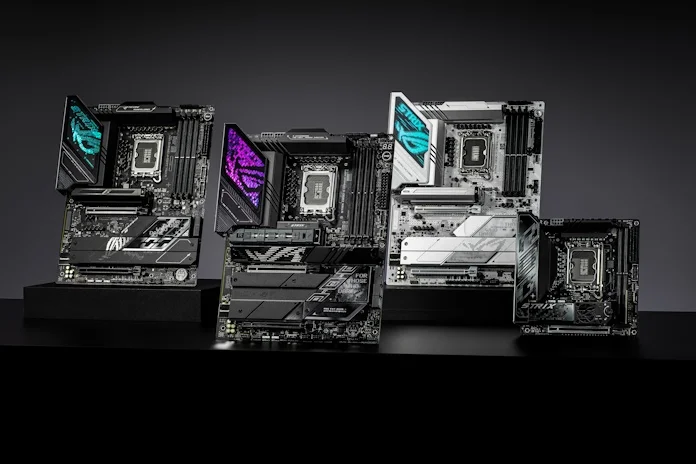
** Results may vary according to individual system specifications, including memory kit and motherboard model. Currently, only 2-DIMM configurations are supported. Results are based on a test with an Intel Core Ultra 9 285K processor and 2x16GB SK Hynix DDR5-6400 Clocked Unbuffered DIMM RAM, model HMCG78AHBCA326N.

